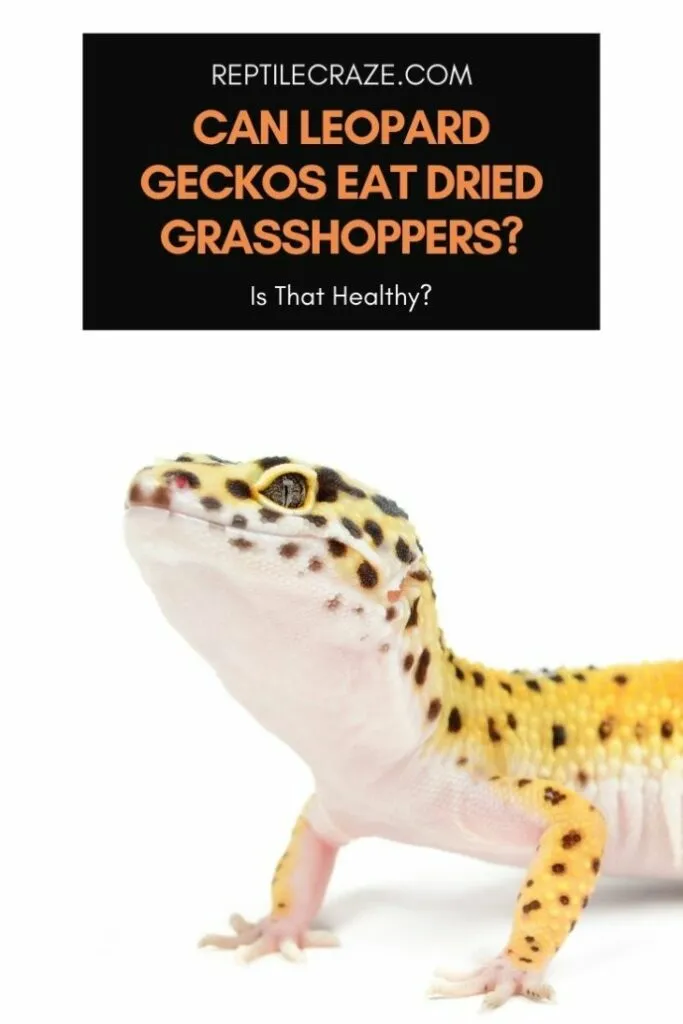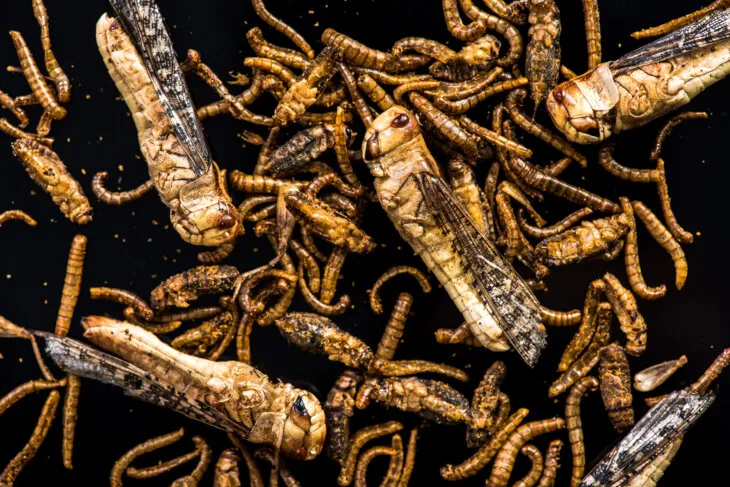
Sometimes, it is nice to offer your Leopard Gecko (Eublepharis macularius) something a little bit different. But, when you’re not feeding an item often, it can be very inconvenient to buy a container of live feed. So, can Leopard Geckos eat freeze-dried grasshoppers (Acrididae spp.)?
Leopard Geckos can be fed freeze-dried grasshoppers as a rare treat. Due to the freeze-drying process, they contain very little moisture and may be dehydrating. They consequently contain very high levels of protein and are more likely to cause impaction.
That’s the quick answer. Read on to find out how freeze-dried grasshoppers compare to live feed, and why they shouldn’t be a part of your Leopard Gecko’s staple diet.
Table of Contents
Freeze-Dried Grasshoppers Are High In Protein And Fiber
Freeze-drying involves freezing something very quickly, and then placing it in a powerful vacuum. This process removes the moisture from the item, preserving it. Freeze-dried grasshoppers do not need to be thawed out. They contain no ice after going into the vacuum.
As a result of this process, freeze-dried grasshoppers have very little moisture in them. Protein makes up a huge percentage of their weight. They are also very high in fiber per gram.
Freeze-dried grasshoppers contain a moderate amount of fat. Unfortunately, the calcium to phosphorus ratio is not freely available information.
As a result, it is difficult to know how freeze-dried grasshoppers might impact the health of your Leopard Gecko with regard to metabolic bone disease.
Nutritional Information For Freeze-Dried Grasshoppers Vs Live Feeder Insects
| Freeze-Dried Grasshoppers | Live Grasshoppers (Phymateus saxosus) | Locusts (Schistocerca gregaria) | Crickets (Acheta domesticus) | |
| Moisture | 11% | 72% | 62% | 73% |
| Protein | 68% | 20% | 22% | 18% |
| Fat | 4.5% | 2% | 9% | 6% |
| Fiber | 11.5% | 5% | 4% | 2% |
| Ca:P Ratio | Not given | Not given | 1:6 | 1:9 |
Freeze-Dried Grasshoppers Are Not Ideal For Leopard Geckos
Though their nutritional profile is not too bad, freeze-dried insects, in general, are not great for your Leopard Gecko. We don’t recommend you give them as staple feeder insects.
They are extremely low in moisture, and Leopard Geckos take most of their hydration from their
Also, think about how difficult would be to swallow down some dried orange without chewing, versus fresh orange. You are much more likely to choke!
Choking and further obstruction of the digestive tract is a major health risk for Leopard Geckos.
Obstructions cause impaction. When this happens, your Leopard Gecko will be unable to digest
We recommend that if you would like to feed freeze-dried grasshoppers, it is best to use them as an emergency backup
Or, just give one as a treat now and then. But, be sure to pick one that is smaller than the width between your Leopard Gecko’s eyes, to reduce the risk of impaction.
Also, leopard geckos are usually not interested in dead
Note: Live grasshoppers are a pretty good feeder insect for leopard geckos as we explain here.

How To Store Freeze-Dried Grasshoppers
To store freeze-dried grasshoppers, keep the lid tightly on the jar. Then put it in a cool, dry place. If moisture gets into the container, the freeze-dried grasshoppers will begin to mold.
Where To Buy Freeze-Dried Grasshoppers
Freeze-dried grasshoppers are available in most pet stores that cater to reptiles. They are also available for purchase on Amazon from many companies.
One of the biggest retailers of freeze-dried grasshoppers is Fluker Farms. This brand is carried by PetCo and Amazon, as well as popular suppliers such as Josh’s Frogs.
Interestingly, freeze-dried grasshoppers are growing in popularity as a protein source for humans. As a result, they are sometimes available from health
But beware to only give your Leopard Geckos plain freeze-dried grasshoppers. These delicious curry-flavored grasshoppers might not be ideal for your pet!
- Enchi Ball Python: A Unique and Stunning Morph of Python regius - March 27, 2025
- Emerald Tree Monitor: The Enigmatic Green Guardian of the Rainforest - March 26, 2025
- The Egyptian Cobra (Naja haje): A Fascinating Serpent - March 25, 2025
